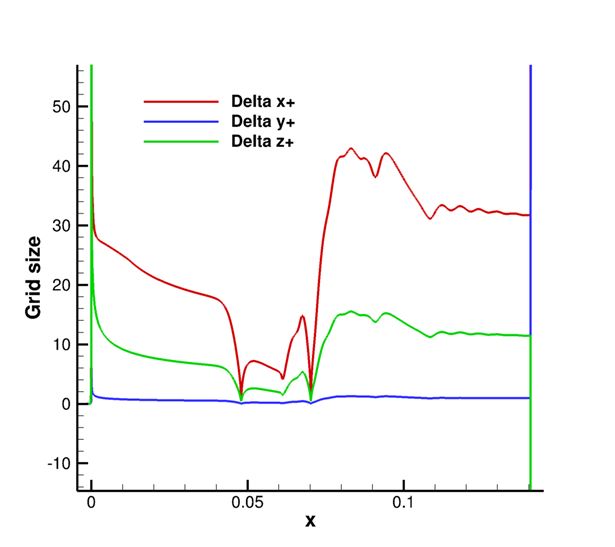LES computation is performed on this test case by using the block-structured solver elsA of ONERA. It relies on a second order accurate finite volume formulation. The convective fluxes are computed thanks to an AUSM+(P) scheme. This scheme relies on a third order reconstruction of the fluxes. The wiggle detector proposed by Ducros et al. is used to enforce the dissipation of the scheme only where necessary. The time advancement relies on a second order implicit backward scheme. When converged, a Newton sub-iterative process ensures the second order accuracy. No subgrid scale model is used. The computation can then considered as being of the part of the MILES approach.
The shock is generated deflecting the upper boundary on a length equal to the one of the actual shock generator used experimentally. A slip boundary condition is applied on this boundary condition. No perturbation is imposed in the inflow plane. Some numerical perturbations are generated at very low level when the boundary condition on the lower wall switches from a slip condition to a no slip one at the beginning of the plate. The width of the computational domain is equal to 6 mm, representing 12 times the separation bubble height. The cost of such computation is reasonable since the grid encompasses about 38.4 millions of points (1568 x 147 x 167). Mesh refinement is given in Fig. 3, with corresponds to a standard LES resolution.

As far as the deviation of 5 degrees is concerned, statistics are collected during 12.3 ms (24 periods at 2 kHz). For the deviation of 2.5 degrees, statistics are only collected during 3.2 ms because low frequency unsteadiness are not expected into the interaction region.
